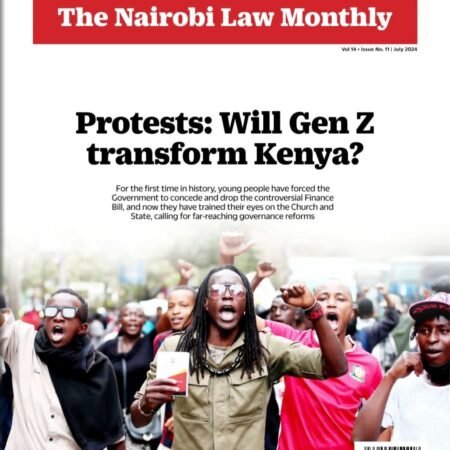By Prof John Harbeson
Ethiopia and Kenya remain among the world’s more fragile states according to the 2019 Fragile States Index produced annually by the Washington-based Fund for Peace. They rank 16th and 17th, respectively, among sub-Saharan African countries and 23rd and 25th among the 174 states in the survey, even though they were the 1st and 2nd most improved countries in the world in the 2019 survey. At the same time, though their specific circumstances differ quite dramatically, they are two of the few countries that have been currently contemplating changing their constitutional political systems.
-
Sale!
Download Nairobi Law Monthly Magazine July 2024 Edition
Downloads Original price was: KShs200.00.KShs100.00Current price is: KShs100.00.
Though nominally one of Africa’s few parliamentary democratic systems, for the past fifteen months Ethiopia has been in the throes of a potentially sustainable profound transformation from de facto uninterrupted authoritarian rule to a yet-to-be constructed democratic constitutional order. Meanwhile, almost a decade into its first truly democratic order under the president system, Kenyan sentiment for amending the 2010 Constitution toward a somewhat more parliamentary system has persisted, as the Katiba Institute observed as recently as a year ago.
A key but seemingly rarely explored question is what kind of democratic political order is best suited to sustaining nascent democracy in fragile states and, better yet, to help significantly reduce their fragility. The complexity of the question has deepened since the first decade or so of post-Cold War era when democracy promotion in Africa and elsewhere in the global south enjoyed strong international support albeit focused disproportionately on free and fair conduct of competitive, multiparty elections. While some international support for democratisation continues, that singular moment of external democratic encouragement no longer exists and is unlikely to return anytime soon. As a result, countries engaged in, or contemplating democratic reform are increasingly on their own in considering how best to structure their democracies in the light of their fragility.
How should Kenya and Ethiopia amend their constitutions to diminish their degrees of state fragility?
Kenya’s somewhat improved fragility indicators suggest that adherence to the requirements of its widely regarded model 2010 Constitution, while very imperfect, especially because of rampant corruption, has been sufficient to make a small but positive impact on state fragility. But, although Kenya has registered significant improvement in the past year, and as well as since 2010, it’s degree of fragility remains at a very high level. On a scale of one (minimal fragility) to 10 (maximum fragility) Kenya’s greatest vulnerabilities have remained “elite factionalisation” (9.1 in 2019) closely followed by “group grievances” (8.6), and “demographic pressures” (8.6), all little changed since 2011. On the other side of the ledger, Kenya’s overall diminished degree of fragility over the decade (from 98.7 to 93.5. out of a possible 120 is best explained by a diminished burden of refugees and internally displaced persons (8.5 to 7.7), improved observance of its human rights and rule of law (7.7 to 6.8) and improved estimates of state legitimacy (from 8.9 to 8.2).
Kenya’s record suggests that for all its problems, a more assertive and capable judiciary than obtained prior to the 2010 constitution may have strengthened the rule of law and improved estimates of state legitimacy, contributing to somewhat diminished fragility. At the same time, strengthening constitutional provisions that force recognition of group grievances and mandate their mitigation could temper elite rivalries resulting in reduced fragility. A parliamentary system could be fashioned with these goals in mind that might encourage but would also require skilled leadership animated by Kenya’s best interests above all others.
Fundamentally, the Ethiopian state is not only fragile, its very existence is at issue. Where other sub-Saharan states have at least had dubiously legitimate “colonial state” inheritances upon which to build, Ethiopia has had only its own inheritance as an African empire, most of which was incorporated by late 19th and early 20th Century conquests. Following the military dictatorship (1974-91). The country has been held together only by an authoritarian EPRDF regime, whose four component parties have become increasingly at odds with one another, as each has been internally as well, by Prime Minister Abiy Ahmed’s liberalizing reforms. He has released thousands of political prisoners, welcomed home political exiles, and allowed often ethnically and locally-based, formerly suppressed opposition parties to flourish openly. All this has been preparation for scheduled national elections in April, 2020.
Abiy’s commitment to democracy is doubtless genuine and deep. But his administration has put at serious risk the very possibility of a durable post-imperial state by seeming to proceed with a second stage of democracy, competitive national elections to govern the country, before undertaking an often overlooked preparatory first stage: democratically establishing a constituent assembly for all parties to arrive at agreed terms on sharing membership in an Ethiopian state before competing with one another for the power to govern it. Their task would be no less than defining in political terms the meaning of Ethiopia. (
Writer is Professor Emeritus of Political Science, City College of New York and Professional Lecturer, Johns Hopkins University, School of Advanced International Studies (SAIS)


